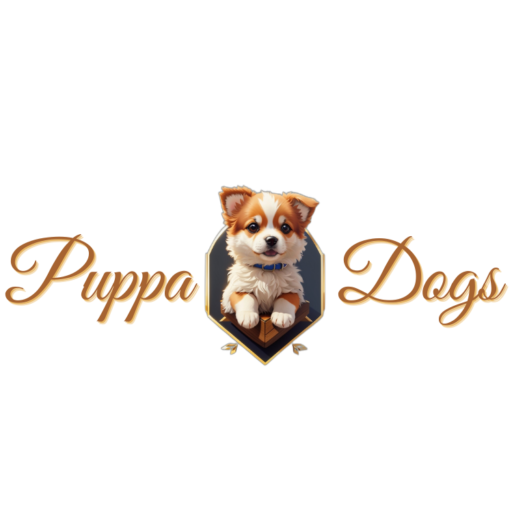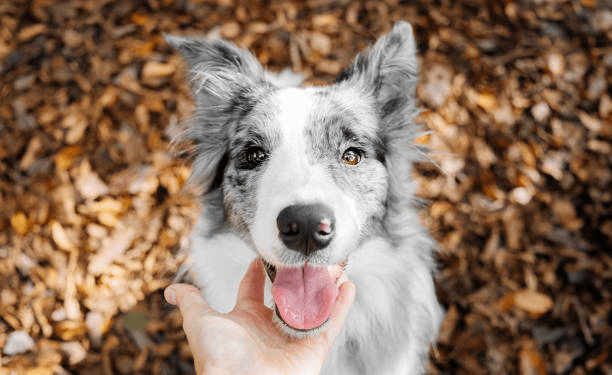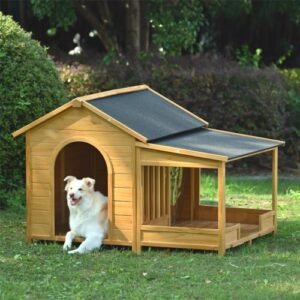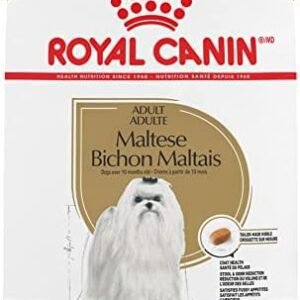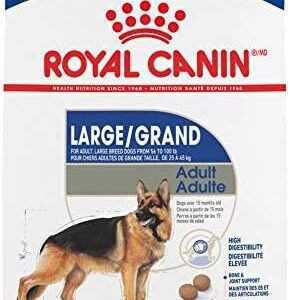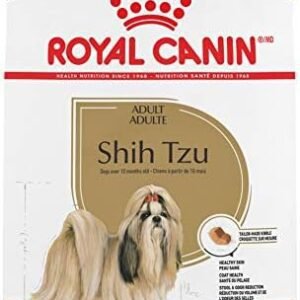Introduction
The Shetland Sheepdog, often affectionately referred to as the “Sheltie,” is a delightful and intelligent herding breed known for its agility, intelligence, and captivating appearance. In this comprehensive guide, we will delve into the characteristics, history, temperament, and care requirements of the Shetland Sheepdog. Whether you’re a prospective Sheltie owner or simply an enthusiast of this remarkable breed, this article will provide you with a wealth of information.
Table of Contents
Origin and History
Origin: The Shetland Sheepdog hails from the rugged Shetland Islands, located in the northern part of Scotland. It is believed to be a descendant of small herding dogs brought to the islands by Norse settlers. Over time, these dogs were selectively bred for their herding abilities, resulting in the development of the Sheltie as we know it today.
Historical Significance: Shetland Sheepdogs played a crucial role in herding and protecting livestock in the challenging terrain and harsh climate of the Shetland Islands. Their small stature and nimbleness made them well-suited for herding the diminutive Shetland sheep. The breed’s strong herding instincts and intelligence have persisted through generations.
Physical Characteristics
Size and Build: Shetland Sheepdogs are small to medium-sized dogs. They typically stand at a height of 13 to 16 inches (33 to 41 cm) at the shoulder and weigh between 15 to 25 pounds (7 to 11 kg). Their compact build, with a balanced body and deep chest, provides them with agility and endurance.
Double Coat: Shelties have a luxurious double coat, consisting of a dense, weather-resistant outer coat and a soft, insulating undercoat. This double coat requires regular grooming to prevent matting and maintain its health. Coat colors can vary and include sable, black and white, blue merle, and more. Their striking mane and abundant ruff around the neck contribute to their regal appearance.
Expressive Eyes: One of the most captivating features of Shetland Sheepdogs is their almond-shaped, expressive eyes. They often have dark, intelligent eyes that radiate a keen awareness and a gentle, affectionate nature.
Ears and Tail: Shelties have small, triangular ears that stand erect, contributing to their alert expression. Their tail is moderately long and plume-like, carried with a graceful curve over their back.
Temperament and Personality
Intelligence: Shetland Sheepdogs are renowned for their intelligence. They are quick learners and excel in various canine activities, including obedience, agility, and herding trials. Their problem-solving skills and adaptability make them a joy to train.
Loyal Companions: Shelties are deeply loyal to their families and form strong bonds. They thrive on human interaction and are known for their affectionate and sensitive nature. They often seek to please their owners and can be quite attuned to their emotions.
Herding Instincts: The herding instincts of the Shetland Sheepdog remain intact, and they may exhibit behaviors such as nipping at heels or circling family members. This is a testament to their lineage as herding dogs.
Alert Watchdogs: Shelties make excellent watchdogs due to their alertness and tendency to bark when they sense something amiss. Their protective instincts, combined with their vocal nature, serve as a deterrent to potential intruders.
Good with Children: Shetland Sheepdogs are typically good with children and other pets, making them an ideal choice for families. Their gentle demeanor and patience are well-suited for a household with kids.
Exercise Needs: While they have herding roots, Shelties do not require an enormous amount of exercise. Regular playtime and daily walks suffice, but mental stimulation is equally crucial. Engaging them in activities that challenge their intelligence is rewarding for both the dog and the owner.
Care and Health Considerations
Grooming: The double coat of the Shetland Sheepdog requires regular grooming to prevent matting and keep it in top condition. Brushing a few times a week is essential, with more frequent sessions during shedding seasons. Pay special attention to their mane, ruff, and feathering on the legs and tail.
Exercise: As mentioned earlier, Shelties do not require excessive exercise, but daily physical and mental stimulation is essential to keep them happy. Engage in activities that tap into their herding instincts, such as agility training and puzzle games.
Nutrition: A balanced and high-quality diet is crucial for the health of Shetland Sheepdogs. Ensure that their diet meets their age, activity level, and specific needs. Consult with your veterinarian for dietary recommendations.
Health Considerations: Shelties are generally a healthy breed, but like all dogs, they can be prone to certain health issues. These may include hip dysplasia, eye conditions such as collie eye anomaly (CEA), and a sensitivity to certain medications. Regular veterinary check-ups and responsible breeding practices are essential to maintain the breed’s health.
Lifespan: Shetland Sheepdogs have a lifespan of approximately 12 to 15 years, provided they receive proper care and a healthy lifestyle. This longevity is a testament to their resilience and robustness when well-cared for.
Shetland Sheepdog Dog Breed
The Shetland Sheepdog, also known as the “Sheltie,” is a charming and highly intelligent breed that has gained popularity among dog enthusiasts worldwide. With their agility, intelligence, and captivating appearance, Shetland Sheepdogs have won the hearts of many. In this section, we’ll delve into the specifics of this remarkable breed, focusing on key characteristics and why the Sheltie is a unique choice for prospective dog owners.
What Sets Shetland Sheepdogs Apart?
Shetland Sheepdogs stand out for various reasons. Their intelligence is a remarkable trait, making them quick learners and versatile in various canine activities. They excel in obedience training, agility, and herding trials, which is a testament to their problem-solving skills and adaptability. This intelligence is a significant factor for those seeking a trainable and responsive companion.
The Importance of Choosing the Right Breed
Selecting the right breed is a critical decision for any prospective dog owner. The breed you choose should align with your lifestyle, living situation, and activity level. Shetland Sheepdogs are an ideal choice for those who appreciate a dog with an alert and protective nature, making them excellent watchdogs. Their adaptability to family life, gentle demeanor, and compatibility with children and other pets also make them an attractive choice for many households.
When choosing a breed, it’s essential to consider their characteristics as they directly influence a dog’s behavior and needs. Understanding these traits allows you to provide the best care and environment for your Sheltie. Here’s a table summarizing key characteristics of the Shetland Sheepdog:
| Field | Information |
|---|---|
| Height | 13 to 16 inches (33 to 41 cm) |
| Weight | 15 to 25 pounds (7 to 11 kg) |
| Life Span | Approximately 12 to 15 years |
| Good with | Children, other pets |
| Temperament | Affectionate, loyal, alert |
| Intelligence | Highly intelligent |
| Shedding Amount | Moderate |
| Grooming | Regular brushing and grooming |
| Exercise Needs | Daily exercise and stimulation |
| Energy Level | Moderate to high |
| Barking Level | Moderate |
| Drool Amount | Low |
| Coat Length/Texture | Double coat, dense and soft |
| Colors | Various, including sable, black and white, blue merle |
| Patterns | Varied patterns in coat |
Please note that some data might not be available as indicated. Understanding these characteristics will help you make an informed decision about whether the Shetland Sheepdog is the right breed for you.
Breed History and Origin
Exploring Their Roots
The Shetland Sheepdog, often affectionately referred to as the “Sheltie,” has a rich history deeply intertwined with the rugged landscapes and challenging climates of the Shetland Islands, located in the northern part of Scotland. To understand the Shetland Sheepdog’s unique characteristics and traits, we must journey back in time to explore their historical development and the breeds that played pivotal roles in their formation.
Norse Ancestry: The history of the Shetland Sheepdog begins with the arrival of Norse settlers in the Shetland Islands over a thousand years ago. These early settlers brought with them small herding dogs, and it is from these dogs that the Shetland Sheepdog is believed to have descended. These dogs were valued for their herding abilities and hardiness, which were essential for managing livestock in the challenging terrain and harsh climate of the Shetland Islands.
Selective Breeding: Over generations, the dogs on the Shetland Islands were selectively bred for their herding instincts and other valuable traits. This selective breeding led to the development of a unique herding breed ideally suited for the Shetland environment. As a result, the Shetland Sheepdog emerged as a compact, agile, and intelligent herding dog, with characteristics that allowed it to thrive in the demanding conditions of the islands.

Notable Traits
The Shetland Sheepdog’s historical significance lies in its distinctive traits and features that set it apart from other herding breeds. These traits have been honed over centuries of herding and adaptation to the Shetland Islands’ specific challenges.
Compact Size: One of the most notable traits of the Shetland Sheepdog is its small to medium-sized build. They stand at a height of 13 to 16 inches (33 to 41 cm) at the shoulder and weigh between 15 to 25 pounds (7 to 11 kg). This compact size, while maintaining agility and endurance, made them well-suited for herding the diminutive Shetland sheep without causing harm to the livestock.
Double Coat: The Sheltie’s double coat is a distinctive feature that has both practical and aesthetic purposes. This luxurious double coat consists of a dense, weather-resistant outer coat and a soft, insulating undercoat. The double coat provides protection from the harsh Shetland climate, keeping the dog warm and dry even in challenging weather conditions.
Alertness and Vocal Nature: Shetland Sheepdogs are known for their alertness and vocal nature. This trait made them excellent watchdogs in the historical context of the Shetland Islands. They would bark and alert their owners to potential threats or intruders, contributing to the safety of livestock and property.
Herding Instincts: Perhaps the most significant historical trait that has been preserved in the Shetland Sheepdog is their strong herding instincts. Even today, Shelties may exhibit behaviors such as nipping at heels or circling family members, a testament to their lineage as herding dogs.
Relevance of Origin
The origin of the Shetland Sheepdog continues to play a vital role in understanding the breed’s characteristics and behaviors today. The historical context in which the Sheltie developed has left a lasting impact on the breed’s nature and temperament.
Adaptability: The Shetland Sheepdog’s ability to adapt to the challenging and ever-changing conditions of the Shetland Islands has made them highly adaptable dogs. Today, this adaptability translates into their ability to thrive in a variety of living situations, making them excellent companions for families and individuals alike.
Herding Instincts: The strong herding instincts that were honed through generations of herding and selective breeding remain a defining feature of the Shetland Sheepdog. These instincts, combined with their intelligence, make them quick learners and versatile in various canine activities.
Protective Nature: The alertness and vocal nature that served as a protective quality in their historical role as watchdogs have made Shelties vigilant companions. They are known for their barking when something is amiss, which can serve as a deterrent to potential intruders even in modern settings.
Understanding the historical roots and the unique traits of the Shetland Sheepdog is crucial for anyone considering bringing this delightful breed into their lives. The breed’s origins have left an indelible mark on their intelligence, adaptability, and herding instincts, making them a distinctive and cherished member of the canine world.
Understanding the Shetland Sheepdog Breed’s Traits
The Shetland Sheepdog, often referred to as the “Sheltie,” is a captivating and intelligent breed with distinctive physical characteristics, a unique temperament, and specific behavioral traits. In this section, we will delve into these traits to provide you with a comprehensive understanding of what to expect when considering a Shetland Sheepdog as your companion.
Physical Characteristics
Size and Build: Shetland Sheepdogs are small to medium-sized dogs. They stand at a height of 13 to 16 inches (33 to 41 cm) at the shoulder and weigh between 15 to 25 pounds (7 to 11 kg). Their compact build, characterized by a balanced body and deep chest, provides them with agility and endurance. Their size makes them well-suited for various living environments, including apartments and houses with small yards.
Double Coat: Shelties possess a luxurious double coat that serves both practical and aesthetic purposes. The outer coat is dense and weather-resistant, providing protection from the elements. The soft, insulating undercoat helps keep them warm in colder conditions. Their coat colors are diverse and include sable, black and white, blue merle, and more. Their striking mane and abundant ruff around the neck contribute to their regal appearance.
Expressive Eyes: One of the most captivating features of Shetland Sheepdogs is their almond-shaped, expressive eyes. They often have dark, intelligent eyes that radiate a keen awareness and a gentle, affectionate nature. Their eyes are a window into their intelligent and sensitive personalities.
Ears and Tail: Shelties have small, triangular ears that stand erect, contributing to their alert expression. Their moderately long tail is plume-like and carried with a graceful curve over their back. The tail adds to their elegance and distinguishes them from other breeds.
Temperament Overview
Suitability as Family Pets: Shetland Sheepdogs are excellent family pets due to their affectionate, loyal, and gentle nature. They form strong bonds with their families and thrive on human interaction. Their intelligence and adaptability make them versatile and responsive companions. Their herding instincts and protective nature also contribute to their suitability as family dogs.
Safety with Children: Shetland Sheepdogs are typically good with children. Their gentle demeanor and patience make them well-suited for families with kids. They may exhibit herding behaviors, such as nipping at heels or circling family members, but this is usually done gently. However, it’s essential to supervise interactions between the dog and young children to ensure mutual respect and safety.
Compatibility with Other Pets: Shelties generally get along well with other pets, including cats and other dogs. Their social nature and adaptability make them open to sharing their living space with other animals. Early socialization is essential to ensure harmonious relationships with other pets in the household.
Environmental Needs: Shetland Sheepdogs can adapt to various living environments, including apartments and houses with small yards. They are not overly demanding in terms of space, but they do require mental stimulation and daily exercise to stay happy and healthy. These dogs enjoy being a part of family activities and should not be left alone for extended periods.
Temperature Tolerance: The Shetland Sheepdog’s double coat provides them with some tolerance to colder temperatures. However, like many small to medium-sized dogs, they can be sensitive to extreme heat. It’s essential to provide them with shade and water during hot weather to prevent overheating.
Common Behavioral Traits
Intelligence and Trainability: Shetland Sheepdogs are renowned for their intelligence. They are quick learners and excel in various canine activities, including obedience, agility, and herding trials. Their problem-solving skills and adaptability make them a joy to train. Mental stimulation is vital for this breed, and they thrive when engaged in activities that challenge their intelligence.
Herding Instincts: The herding instincts of the Shetland Sheepdog remain intact. While they may exhibit behaviors such as nipping at heels or circling, these actions are usually done gently. Their herding instincts are a testament to their historical role as herding dogs. It’s essential to provide them with appropriate outlets for their herding tendencies to prevent them from herding people or other pets in the household.
Alertness and Vocal Nature: Shelties make excellent watchdogs due to their alertness and tendency to bark when they sense something amiss. While this quality can be valuable for security, it’s essential to manage their barking tendencies to prevent excessive noise. Early training and socialization can help them distinguish between real threats and everyday stimuli.
Social Interaction: Shetland Sheepdogs are social dogs and thrive on human interaction. They form strong bonds with their families and may exhibit separation anxiety if left alone for extended periods. Regular socialization with people and other animals is crucial to ensure they remain well-adjusted and friendly.
Exercise Needs: While Shelties have herding roots, they do not require an enormous amount of exercise. Regular playtime and daily walks are sufficient to meet their physical needs. However, it’s essential to engage them in activities that tap into their herding instincts and challenge their intelligence.
Understanding the Shetland Sheepdog’s physical characteristics, temperament, environmental needs, and common behavioral traits is essential for anyone considering this breed as a pet. Shelties are loving, adaptable, and intelligent dogs, making them ideal companions for families and individuals alike. Proper care, training, and socialization will ensure that your Shetland Sheepdog thrives and becomes a cherished member of your family.
Popularity and Recognition
Current Popularity
The Shetland Sheepdog, affectionately known as the “Sheltie,” continues to be a popular and beloved breed today. Their intelligence, charming appearance, and adaptable nature make them sought-after companions for various types of dog owners. While precise statistics on breed popularity can vary from region to region and year to year, the Shetland Sheepdog consistently ranks among the top 100 dog breeds in the United States and other countries.
Shetland Sheepdogs are particularly popular with families, singles, and seniors, thanks to their manageable size, friendly temperament, and ability to adapt to different living environments. Their combination of alertness and loyalty makes them excellent watchdogs, adding to their appeal as household pets.
Breed Recognition
The Shetland Sheepdog is recognized and registered by several major kennel clubs and breed organizations worldwide. Some of the prominent organizations that officially recognize and standardize the breed include:
The American Kennel Club (AKC): The Shetland Sheepdog is recognized as a breed by the AKC and falls under the Herding Group. The AKC provides breed standards that describe the ideal Sheltie’s physical and temperament characteristics, which are used as a reference by breeders and judges in conformation shows.
The Kennel Club (UK): In the United Kingdom, the Kennel Club officially recognizes the Shetland Sheepdog as a breed. The Kennel Club provides similar breed standards and organizes dog shows where Shelties can compete.
The Canadian Kennel Club (CKC): Shetland Sheepdogs are also recognized by the CKC, and they participate in CKC-sanctioned dog shows and events.
- Fédération Cynologique Internationale (FCI): The FCI, an international canine organization, recognizes the Shetland Sheepdog under its auspices, and many other countries around the world follow FCI standards for the breed.
These breed standards established by kennel clubs provide guidelines for Shetland Sheepdog breeders and judges to maintain the breed’s conformation and temperament. Recognition by these organizations contributes to the breed’s continued preservation and promotion.
Notable Breed Varieties
The Shetland Sheepdog is generally a well-defined breed with a relatively consistent appearance and temperament. However, within the breed, you can sometimes find distinctions based on factors such as lineage, breeding practices, and geographic regions. While these distinctions may not be as pronounced as those in some other breeds, here are a few notable variations or subtypes of Shetland Sheepdogs:
Working Lines vs. Show Lines: Shetland Sheepdogs bred for work on farms or herding may exhibit a slightly different appearance and behavioral traits compared to those bred for the show ring. Working lines tend to focus more on herding ability, while show lines prioritize conforming to breed standards. However, these differences are subtle, and both types make excellent pets.
Color Variations: While the official breed standards recognize various coat colors and patterns, there can be individual variation within these categories. Some Shelties may have more pronounced or unique color patterns, such as striking merles, while others may have a more traditional sable or black and white appearance.
Size Variations: Although there is a standard size range for Shetland Sheepdogs, there can be some size variations within the breed. Some Shelties may be on the smaller end of the size spectrum, while others may be closer to the upper limit.
- Coat Variations: While Shelties are known for their luxurious double coat, individual dogs may have variations in coat texture and thickness. Some may have a particularly dense outer coat, while others may have a softer undercoat.
It’s important to note that these variations do not create separate distinct sub-breeds but rather reflect the natural diversity within the Shetland Sheepdog breed. Regardless of these variations, the core characteristics of intelligence, adaptability, and loyalty remain consistent across the breed. When selecting a Sheltie, it’s crucial to prioritize the specific traits and temperament that align with your needs and lifestyle rather than focusing solely on variations within the breed.
Health Considerations and Care
Shetland Sheepdogs are generally a healthy breed, but like all dogs, they can be prone to certain health issues. It’s crucial for Sheltie owners to be aware of these potential health problems and to prioritize their dog’s well-being through regular veterinary check-ups, a balanced diet, and responsible breeding practices. In this section, we’ll discuss common health issues, lifespan, and tips for promoting a longer and healthier life for your Shetland Sheepdog.
Common Health Issues
While Shetland Sheepdogs are known for their robustness, there are specific health issues to be mindful of. These issues can affect the breed, and early detection is essential for effective treatment. Here are some common health problems associated with Shetland Sheepdogs:
Hip Dysplasia: Hip dysplasia is a hereditary condition in which the hip joint doesn’t develop properly. It can lead to arthritis and mobility issues. Responsible breeders screen for hip dysplasia in their breeding dogs, but it’s still essential to monitor your Sheltie’s mobility and consult with your veterinarian if you notice any signs of discomfort.
Collie Eye Anomaly (CEA): Collie Eye Anomaly is a genetic condition that can affect Shelties, as well as other Collie breeds. It causes abnormalities in the eye and can result in impaired vision. Responsible breeding practices include screening for CEA, and affected dogs should not be used for breeding.
Dermatomyositis: Dermatomyositis is a skin condition that can affect Shetland Sheepdogs. It can cause skin lesions, muscle inflammation, and pain. Regular check-ups with a veterinarian can help detect and manage this condition.
Sensitivity to Ivermectin: Some Shelties are sensitive to certain medications, including Ivermectin, which is commonly used to treat parasites. This sensitivity can lead to adverse reactions, including neurological symptoms. It’s crucial to inform your veterinarian about your Shetland Sheepdog’s sensitivity to such medications to avoid potential issues.
Bloat (Gastric Torsion): Bloat is a life-threatening condition where the stomach twists, causing an obstruction and cutting off blood flow. Shetland Sheepdogs, like many deep-chested breeds, can be at risk. Feeding your dog smaller meals, avoiding strenuous exercise after meals, and keeping them calm can help reduce the risk of bloat.
Allergies: Shelties can be prone to allergies, which can manifest as skin irritations and other symptoms. Identifying and managing allergies often requires dietary changes or medication, and your veterinarian can provide guidance.
Lifespan and Longevity
Shetland Sheepdogs have a relatively long lifespan for a dog breed, with an average life expectancy of approximately 12 to 15 years. With proper care and a healthy lifestyle, some individuals have been known to live even longer. Here are some tips to promote a longer and healthier life for your Shetland Sheepdog:
Balanced Diet: Provide your Sheltie with a balanced and high-quality diet that meets their specific needs based on age, activity level, and any health considerations. Consult with your veterinarian to ensure your dog’s diet is appropriate.
Regular Exercise: While Shetland Sheepdogs do not require extensive exercise, regular physical activity is essential to keep them in good shape. Daily walks, playtime, and engaging in activities that challenge their intelligence are beneficial.
Mental Stimulation: Shelties thrive on mental stimulation. Engage them in puzzle games, obedience training, and other activities that tap into their intelligence. A stimulated mind leads to a happier and healthier dog.
Regular Veterinary Check-ups: Schedule regular check-ups with your veterinarian. These appointments are crucial for early detection of potential health issues and for keeping up with vaccinations and preventive care.
Grooming: Maintain regular grooming sessions to keep your Sheltie’s double coat in top condition. Brushing a few times a week, with more frequent sessions during shedding seasons, helps prevent matting and keeps their coat healthy.
Dental Care: Pay attention to your Shetland Sheepdog’s dental health. Brush their teeth regularly and provide dental chews or toys to help keep their teeth clean. Dental problems can affect overall health, so prevention is essential.
Weight Management: Keep your Sheltie at a healthy weight. Obesity can lead to various health issues, including joint problems and diabetes. Monitor their food intake and engage in regular exercise to maintain an ideal weight.
Socialization: Ensure your Shetland Sheepdog is well-socialized from a young age. Exposing them to various people, animals, and environments helps them become well-adjusted and confident.
Avoid Overheating: Shelties can be sensitive to heat. During hot weather, provide shade and plenty of water to prevent overheating. Be cautious when exercising them in high temperatures.
- Heartworm and Parasite Prevention: Use preventive measures to protect your Sheltie from heartworm and other parasites. Consult your veterinarian for the most appropriate prevention methods.
Promoting a long and healthy life for your Shetland Sheepdog involves a combination of proper care, regular veterinary attention, and a nurturing environment. Understanding their specific health considerations and being proactive in their care will help ensure that your Sheltie enjoys a fulfilling and happy life as your cherished companion.
Exercise and Activity Recommendations
Ensuring that your Shetland Sheepdog receives adequate exercise and mental stimulation is essential to keep them happy, healthy, and well-behaved. While Shelties are not the most demanding in terms of exercise among dog breeds, they do have specific needs to cater to their intelligence and herding instincts. Here’s a detailed exercise plan to help you meet those needs:
Daily Walks
Duration: Shetland Sheepdogs benefit from at least one to two daily walks. Each walk should last approximately 30 minutes to an hour, depending on your dog’s age and energy level. Younger Shelties may require longer walks to burn off excess energy.
Frequency: Walks should be a daily routine. In addition to physical exercise, these walks provide opportunities for mental stimulation as your Sheltie encounters various scents, sights, and sounds during the outing.
Benefits: Daily walks help maintain your Sheltie’s physical health and prevent boredom. These outings also provide essential bonding time between you and your dog.
Playtime
Types of Play: Engage in interactive play sessions with your Shetland Sheepdog. This can include playing fetch, tug of war, hide-and-seek, or any other games your dog enjoys.
Duration: Playtime sessions can vary in length. You can start with 10-15 minute sessions and increase the time if your Sheltie is enjoying the activity. It’s important to monitor your dog to prevent overexertion, especially during warm weather.
Frequency: Aim for at least two to three play sessions per day, depending on your dog’s energy level and interest in play.
Benefits: Interactive play provides mental stimulation, exercise, and an opportunity to strengthen the bond between you and your Sheltie. It’s also a fun way to channel their intelligence and keep them engaged.
Agility Training
Types of Training: Shetland Sheepdogs excel in agility training due to their intelligence and agility. Set up agility courses with jumps, tunnels, weave poles, and other obstacles. You can create your agility course in your backyard or find local agility classes to participate in.
Duration: Agility training sessions can last from 20 minutes to 45 minutes, depending on your dog’s skill level and attention span.
Frequency: Participate in agility training once or twice a week. These sessions are mentally and physically demanding, making them an excellent way to keep your Sheltie engaged.
Benefits: Agility training challenges your Sheltie’s problem-solving skills, physical fitness, and coordination. It’s a fantastic way to exercise both their body and mind.
Herding Activities
Types of Activities: To tap into your Sheltie’s herding instincts, you can engage in activities such as herding classes, working with livestock (if available), or even herding trials.
Duration: The duration of herding activities can vary significantly. Classes or trials may take a few hours, while working with livestock can be a full-day activity.
Frequency: Depending on your availability and interest, you can engage in herding activities once a week or on a more occasional basis.
Benefits: Herding activities allow your Sheltie to express their natural instincts and abilities. It’s not only physically stimulating but also emotionally rewarding for your dog.
Mental Stimulation
In addition to physical exercise, mental stimulation is vital for Shetland Sheepdogs. Their intelligence requires activities that challenge their minds. Here are some ways to provide mental stimulation:
- Puzzle Toys: Invest in puzzle toys that dispense treats as your dog solves the puzzles.
- Training Sessions: Regular training sessions to teach new commands and tricks keep your Sheltie’s mind sharp.
- Nose Work: Set up scent games or hide treats around the house or yard for your dog to find.
Remember that mental stimulation can be just as tiring as physical exercise, so be sure to include a combination of both in your daily routine.
Breed-Specific Considerations
Shetland Sheepdogs have unique herding instincts, and it’s crucial to address these breed-specific considerations in their exercise routine:
Nipping Behavior: While walking or playing, your Sheltie may exhibit nipping or herding behaviors, especially if they’re excited. It’s essential to discourage nipping at human heels and redirect their herding instincts toward appropriate toys or activities.
Supervision: If you’re introducing your Sheltie to other pets or livestock, close supervision is necessary to ensure a safe and controlled environment. Their herding instincts may cause them to try and gather other animals.
Heat Sensitivity: Shetland Sheepdogs can be sensitive to heat, so avoid excessive exercise during hot weather. Ensure they have access to shade and water, and consider early morning or evening walks during the summer.
- Varied Activities: Shetland Sheepdogs thrive when they have a variety of activities to engage in. Mixing up your exercise routine keeps them mentally stimulated and prevents boredom.
Adhering to this exercise plan, along with considering breed-specific needs and sensitivities, will help ensure that your Shetland Sheepdog remains a happy and well-rounded companion. Tailoring their exercise to their individual energy level and interests is also essential for a fulfilling and healthy life.

Nutrition and Feeding Guidelines
Feeding your Shetland Sheepdog a well-balanced and appropriate diet is essential for maintaining their health and ensuring a long, happy life. In this section, we will provide specific dietary recommendations based on the breed’s size, age, and activity level, along with information on any dietary restrictions or allergies commonly associated with Shetland Sheepdogs. We’ll also discuss feeding schedules and portion control to help you keep your Sheltie in optimal condition.
Dietary Requirements
Size Matters
Shetland Sheepdogs are a small to medium-sized breed, and their dietary needs are influenced by their size. Here are some general guidelines based on your Sheltie’s size:
Puppy Shelties: Growing Sheltie puppies require a diet specifically formulated for puppies. These diets provide the necessary nutrients for healthy growth and development. You should feed your Sheltie puppy a high-quality puppy food recommended by your veterinarian. Puppies typically require more frequent feeding throughout the day.
Adult Shelties: Once your Sheltie reaches adulthood, they can transition to an adult dog food. Adult Shelties need a diet that supports their activity level and overall health. You can continue to feed your Sheltie twice a day, once in the morning and once in the evening.
Senior Shelties: As your Sheltie ages, their nutritional needs may change. Senior dog foods are available and are designed to support the specific needs of older dogs. These diets often have lower calories to help maintain a healthy weight and contain ingredients that support joint health. Consult with your veterinarian when it’s time to transition to a senior diet.

Activity Level
Another factor that affects your Shetland Sheepdog’s dietary requirements is their activity level. Shelties, while not extremely active, do benefit from regular exercise and mental stimulation. Here’s how their activity level can influence their diet:
Moderate Activity: Shelties have a moderate activity level, so they don’t require a high-calorie diet. A well-balanced, maintenance dog food should be suitable for most adult Shelties. Look for foods that contain high-quality protein sources and a balance of fats and carbohydrates.
Highly Active: If your Sheltie is exceptionally active, perhaps participating in agility or other canine sports, you may need to adjust their diet to provide more calories. Consider a performance or active dog formula, which has increased calorie content to support their energy needs.
Dietary Restrictions and Allergies
While Shetland Sheepdogs are generally a healthy breed, like all dogs, they can have individual dietary restrictions and allergies. Common food allergies in dogs include ingredients like chicken, beef, dairy, and grains. It’s essential to monitor your Sheltie for any signs of food allergies, which can manifest as digestive issues, skin problems, or itching.
If you suspect your Sheltie has food allergies or sensitivities, consult with your veterinarian to determine the best approach. Your vet may recommend hypoallergenic or limited-ingredient diets to identify and manage the specific allergen. It’s crucial to follow their guidance to ensure your dog’s dietary needs are met while avoiding problematic ingredients.
Feeding Schedule and Portion Control
Establishing a regular feeding schedule and controlling portion sizes is vital for maintaining your Shetland Sheepdog’s ideal weight and overall health. Here are some feeding guidelines to consider:
Meal Frequency: Shetland Sheepdogs can be fed two meals a day—once in the morning and once in the evening. This schedule helps prevent overeating and maintains their energy levels throughout the day.
Portion Control: The exact portion size depends on the specific dog food you choose and your Sheltie’s size, age, and activity level. Follow the recommended feeding guidelines on the dog food packaging as a starting point. It’s essential to monitor your dog’s weight and adjust portions accordingly. Overfeeding can lead to obesity, while underfeeding can result in malnutrition.
Avoid Free Feeding: Free-feeding, where food is left out for your dog to eat at their leisure, can lead to overeating and weight gain. It’s best to offer measured portions at set meal times.
- Fresh Water: Always provide fresh, clean water for your Sheltie. Hydration is essential for their well-being.
Special Considerations
Shetland Sheepdogs may be prone to certain health conditions, such as hip dysplasia and collie eye anomaly (CEA). These conditions may require dietary modifications or specific supplements. Consult with your veterinarian if your Sheltie has any underlying health concerns to determine the best diet for their condition.
Personal Stories and Testimonials
To provide a deeper and more personal insight into the world of Shetland Sheepdogs, we’ve gathered stories and testimonials from owners who have shared their experiences, challenges, and joys of having these remarkable dogs as companions.
Sarah’s Tale: The Sheltie Who Stole My Heart
“It was a beautiful summer day when I first met Jake, my Shetland Sheepdog. I had been considering getting a dog for a while, but I wasn’t sure which breed would be the best fit for my lifestyle. After extensive research, I was drawn to Shelties for their intelligence and adaptability.
When I brought Jake home, I was immediately struck by his expressive eyes and his lively, inquisitive nature. He seemed to understand every word I said and was eager to learn new tricks and commands. We enrolled in obedience classes, where Jake’s intelligence shone through. He quickly mastered various commands, and his trainer even commented on how remarkable he was.
But it wasn’t just Jake’s intelligence that won me over; it was his unwavering loyalty and affection. He follows me from room to room, and I can always count on him to brighten my day with his playful antics and joyful presence.
Of course, Jake’s herding instincts did surface occasionally. He would gently nudge my heels when I walked, which I found endearing. It’s as if he were born to be my protector and guide. His alertness and watchful eye also made me feel safer at home.
We enjoy our daily walks and playtime in the park, where Jake’s boundless energy is on full display. His agility and enthusiasm make our time together truly special. Whether we’re hiking, playing fetch, or simply lounging on the couch, Jake is my constant companion and the source of endless joy in my life.”
Mark’s Adventure Buddy: A Sheltie’s Love for the Outdoors
“Being an avid outdoors enthusiast, I knew I needed a canine companion who could keep up with my adventurous spirit. I found my perfect partner in Cody, a Shetland Sheepdog. We share a deep love for hiking and exploring the great outdoors.
Cody’s agility and stamina make him an exceptional adventure buddy. He can navigate challenging terrains with ease and is always up for a new trail. His intelligence shines during our hikes, as he’s quick to spot wildlife and alert me to any potential hazards.
Our camping trips are a true testament to Cody’s adaptability. He’s comfortable in various environments, from lush forests to mountainous landscapes. While he may enjoy chasing after squirrels, he knows when to stay close and when to come to my side.
One of the most remarkable things about Cody is his ability to learn on the go. We’ve encountered situations where his problem-solving skills have impressed me. Whether it’s crossing a stream or finding a safe path up a steep slope, he’s a quick thinker and a trusty partner.
But our adventures aren’t just about physical activities. At the end of a long day outdoors, Cody is content to curl up by the campfire and enjoy the tranquility of nature. His presence adds an extra layer of joy to my outdoor experiences.”
Challenges and Rewards: Life with a Shetland Sheepdog
“Owning a Shetland Sheepdog has been both challenging and rewarding. Luna, my Sheltie, is a bundle of energy and intelligence. Her agility and eagerness to learn have made her a delight to train. We’ve excelled in obedience training and even participated in agility competitions.
However, Luna’s herding instincts are ever-present. At times, she exhibits behaviors like nipping at heels, particularly when we have guests over. While it’s a testament to her lineage, it can be a challenge to manage her herding tendencies in social situations. Early training and socialization have been vital in helping Luna distinguish between play and work.
The grooming needs of Shetland Sheepdogs are another aspect to consider. Luna’s double coat requires regular brushing and maintenance to prevent matting. Shedding seasons mean more frequent grooming sessions. While it requires time and effort, I’ve come to appreciate these grooming sessions as moments of bonding with my furry friend.
Despite the challenges, Luna’s loyalty and companionship are invaluable. She’s not just a pet; she’s family. Her watchful eyes and protective nature provide a sense of security at home. Luna’s enthusiasm for play and her ability to brighten even the gloomiest days make all the effort worthwhile. I wouldn’t trade our adventures and shared moments for anything in the world.”
The Cost of Owning a Shetland Sheepdog
When considering bringing a Shetland Sheepdog into your life, it’s essential to understand the costs associated with dog ownership. Dogs, like any other pets, require a financial commitment that extends beyond the initial purchase or adoption fee. Here, we’ll break down the expenses, including upfront costs and ongoing expenses, and discuss the importance of budgeting for your dog’s needs.
Upfront Costs
Acquisition: The initial cost of acquiring a Shetland Sheepdog can vary depending on whether you adopt from a shelter or purchase from a breeder. Adoption fees typically range from $50 to $200, while purchasing from a responsible breeder can cost between $800 to $2,500 or more.
Supplies: You’ll need to invest in various supplies, including food and water bowls, a collar and leash, a crate or carrier, bedding, and toys. These initial supplies can add up to around $100 to $200.
Spaying/Neutering: If your Sheltie isn’t already spayed or neutered, this procedure is important for their health and to prevent unwanted litters. The cost varies but is typically between $200 to $500.
Microchipping: Microchipping your dog is a safety measure in case they get lost. This costs around $50 to $100.
Initial Veterinary Check-up: Your new Shetland Sheepdog will need an initial check-up with a veterinarian to ensure they are healthy and up to date on vaccinations. This can cost around $50 to $100.
Training and Socialization: Enrolling in puppy training classes and socialization activities is essential. Costs can range from $100 to $300.
Ongoing Expenses
Food: The cost of high-quality dog food depends on the brand and your dog’s size. On average, you can expect to spend $500 to $1,000 annually on dog food.
Grooming: Shetland Sheepdogs require regular grooming, including brushing and occasional professional grooming. This can add up to $200 to $500 per year.
Veterinary Care: Routine veterinary care, including vaccinations, heartworm prevention, and annual check-ups, is essential. Budget for $200 to $500 annually, depending on your dog’s health needs.
Medications: Shelties may require medications for flea and tick prevention or specific health conditions. Budget an additional $50 to $200 per year for medications.
Toys and Supplies: Replacing toys, bedding, and other supplies periodically may cost $50 to $100 annually.
Training and Activities: Ongoing training and activities to keep your Sheltie mentally and physically stimulated can range from $100
Grooming and Care for Shetland Sheepdogs
Grooming and care are essential aspects of keeping your Shetland Sheepdog healthy, happy, and looking their best. The Sheltie’s double coat requires regular maintenance, and there are various other aspects to consider to ensure your furry friend thrives. In this section, we’ll provide you with valuable advice on grooming and general care for Shetland Sheepdogs, including tips, recommended accessories, and products tailored to this breed’s needs.
Coat Care
Brushing
Shetland Sheepdogs have a beautiful double coat that consists of a dense, weather-resistant outer coat and a soft, insulating undercoat. To keep their coat in optimal condition, regular brushing is a must. Here are some tips for brushing your Sheltie:
- Use a slicker brush or a pin brush with long, thin bristles. These types of brushes are effective at reaching the dense undercoat and preventing matting.
- Start brushing from the neck down towards the tail, following the natural direction of the fur.
- Pay special attention to areas with longer hair, such as the mane, ruff around the neck, and feathering on the legs and tail.
- Brush your Shetland Sheepdog a few times a week, but increase the frequency during shedding seasons to prevent excessive shedding and matting.
Bathing
Shelties don’t require frequent baths, and over-bathing can strip their coat of natural oils. It’s generally recommended to bathe them every two to three months, or as needed when they get dirty or smelly. Use a mild dog shampoo to keep their coat clean and fresh. Be sure to thoroughly rinse and dry your Sheltie after a bath to avoid any skin issues.
Dealing with Shedding
Shedding is a common concern with Shetland Sheepdogs, especially during seasonal changes. While regular brushing helps manage shedding, you can also use a shedding blade or tool designed for removing loose fur. This can be especially helpful during heavy shedding periods.
Dental Care
Dental health is essential for all dogs, including Shelties. Regular dental care helps prevent dental problems and maintains your dog’s overall well-being. Here’s what you can do:
- Brush your Shetland Sheepdog’s teeth regularly with a dog-specific toothbrush and toothpaste. This helps reduce the buildup of plaque and tartar.
- Provide dental chews, toys, or treats that promote dental health. Chewing on appropriate items can help keep your dog’s teeth clean.
- Schedule regular dental check-ups with your veterinarian to ensure any dental issues are addressed promptly.
Exercise and Mental Stimulation
While Shetland Sheepdogs don’t require excessive exercise, they do need daily physical and mental stimulation to stay happy and healthy. Here are some tips for keeping your Sheltie engaged:
- Daily walks are essential to meet their physical exercise needs. They enjoy exploring and will appreciate different environments.
- Engage in activities that tap into their herding instincts, such as agility training and puzzle games. This provides mental stimulation and helps prevent boredom.
- Interactive toys and puzzle feeders can keep your Shetland Sheepdog mentally engaged and provide a fun challenge.
Nutrition
Proper nutrition is crucial for your Sheltie’s health and well-being. Here are some tips for maintaining a balanced diet:
- Choose a high-quality dog food that meets the specific needs of your Shetland Sheepdog. Factors such as age, activity level, and any health concerns should be considered.
- Consult with your veterinarian to determine the appropriate portion sizes and feeding schedule for your dog.
- Avoid overfeeding and monitor your Shetland Sheepdog’s weight to prevent obesity, which can lead to health issues.
Health Considerations
Shetland Sheepdogs are generally a healthy breed, but like all dogs, they can be prone to certain health issues. It’s essential to be aware of these potential concerns and take proactive steps to ensure your dog’s health. Some common health considerations for Shelties include:
Hip Dysplasia: Shetland Sheepdogs can be susceptible to hip dysplasia, a condition where the hip joint doesn’t develop correctly. Regular vet check-ups and proper nutrition can help manage this issue.
Eye Conditions: Collie Eye Anomaly (CEA) is a hereditary eye condition that can affect Shetland Sheepdogs. Regular eye exams are recommended to monitor their eye health.
Medication Sensitivity: Shelties can be sensitive to certain medications, particularly those used for anesthesia. Make sure to inform your veterinarian of your dog’s breed and any known sensitivities.
- Regular Veterinary Check-ups: Routine check-ups with your veterinarian are crucial to monitor your Shetland Sheepdog’s overall health and address any concerns promptly.
Recommended Accessories and Care Products
To make grooming and caring for your Shetland Sheepdog easier and more effective, consider using the following accessories and care products:
Slicker Brush or Pin Brush: These brushes are ideal for keeping your Sheltie’s coat in top condition.
Shedding Blade or Tool: Helps manage shedding and remove loose fur during seasonal changes.
Dog-Specific Toothbrush and Toothpaste: For maintaining your dog’s dental health.
High-Quality Dog Food: Choose a well-balanced food that meets your Sheltie’s nutritional needs.
Interactive Toys and Puzzle Feeders: These items provide mental stimulation and entertainment.
Mild Dog Shampoo: Use a gentle shampoo for occasional baths to avoid skin issues.
- Dog-Specific Dental Chews and Toys: Promote dental health through regular chewing.
By following these grooming and care tips and using the recommended accessories and products, you can ensure that your Shetland Sheepdog enjoys a happy, healthy, and fulfilling life as your cherished companion. Proper grooming, dental care, exercise, nutrition, and regular vet check-ups are the keys to a long and wonderful journey with your Sheltie.
Choosing and Adopting a Shetland Sheepdog
Bringing a Shetland Sheepdog into your life is a wonderful decision, but it’s crucial to approach it with thoughtfulness and responsibility. Whether you’re considering adopting from a rescue organization or seeking a Sheltie from a breeder, this section will guide you through the process, highlighting the benefits of adopting, preparing for your new companion, and ethical considerations regarding breeding.
Reasons for Adoption
Adopting a Shetland Sheepdog from a rescue organization or shelter is a heartwarming and compassionate choice. There are several reasons why adopting a Sheltie can be an incredibly rewarding experience:
1. Giving a Second Chance: By adopting a rescue dog, you provide a loving home to a Sheltie in need. Many rescue dogs have faced challenges in their lives, such as abandonment or neglect. Your decision to adopt can offer them a fresh start and a chance for a better life.
2. Reducing Overpopulation: Shelters and rescue organizations are often overcrowded with dogs waiting for homes. By adopting, you contribute to the solution by reducing the demand for dogs from breeding facilities, thereby helping to alleviate overpopulation issues.
3. Health and Behavioral Assessments: Many rescue organizations thoroughly assess a dog’s health and behavior before adoption. This means you can often get valuable insights into your potential pet’s temperament and any health issues they may have. This transparency can help you make an informed decision.
4. Costs and Accessibility: Adopting a Shetland Sheepdog from a rescue organization is generally more affordable than purchasing from a breeder. Additionally, rescue organizations can be found in many regions, making it accessible for a wide range of potential owners.
5. Unconditional Love: Adopted dogs often exhibit an immense amount of gratitude and loyalty. It’s as if they understand that you’ve given them a second chance at a happy life. The bond you develop with an adopted Sheltie can be incredibly deep and fulfilling.
Research and Preparation
Before adopting a Shetland Sheepdog, it’s essential to engage in thorough research and preparation. This process will help ensure a smooth transition for both you and your new companion.
1. Understand the Breed: Shetland Sheepdogs have unique characteristics and needs. Research their temperament, exercise requirements, grooming demands, and health considerations. Ensure that your lifestyle aligns with the breed’s traits.
2. Evaluate Your Lifestyle: Assess your daily routines, living environment, and activity level. Shelties thrive on interaction and exercise, so make sure you can provide them with the attention and care they need.
3. Financial Responsibilities: Owning a dog involves financial commitments. Consider the costs of food, grooming, veterinary care, training, and supplies. Be prepared for unexpected medical expenses as well.
4. Time Commitment: Shetland Sheepdogs are social dogs that require interaction and mental stimulation. Make sure you have the time to engage with your Sheltie and provide them with activities to keep their mind sharp.
5. Training and Socialization: Plan to invest time in training and socializing your Sheltie. Proper training ensures they become well-behaved companions, and early socialization is essential for their interaction with other pets and people.
6. Puppy or Adult Dog: Decide whether you want to adopt a puppy or an adult Shetland Sheepdog. Puppies require more time and patience for training, while adult dogs may already have established behaviors and habits.
7. Shelter or Rescue Organization: Research local shelters and rescue organizations that specialize in Shetland Sheepdogs. Check their adoption requirements and policies. Reach out and ask questions about available dogs and the adoption process.
Adoption Process
Adopting a Shetland Sheepdog involves several important steps. The process can vary depending on the rescue organization or shelter, but here’s a general overview of what you can expect:
1. Application: Start by filling out an adoption application. These forms typically inquire about your living situation, experience with dogs, and how you plan to care for your new pet.
2. Interview or Home Visit: Some organizations may conduct interviews or home visits to ensure that your home is a safe and suitable environment for a Shetland Sheepdog. These checks are meant to ensure the well-being of the dog.
3. Adoption Fee: Be prepared to pay an adoption fee. This fee helps cover the costs of caring for the dog, including vaccinations, spaying or neutering, and any necessary medical treatments. The adoption fee can vary but is generally reasonable.
4. Agreement and Paperwork: You’ll be asked to sign an adoption agreement, which outlines your responsibilities as a pet owner and often includes clauses about returning the dog to the rescue organization if necessary.
5. Bringing Your Sheltie Home: Once you’ve been approved for adoption and completed the necessary paperwork, you can bring your Shetland Sheepdog home. Prepare your living space with necessary supplies, such as food, water bowls, toys, and bedding.
Breeding and Ethical Considerations
If you decide to pursue acquiring a Shetland Sheepdog from a breeder, it’s essential to prioritize responsible breeding practices and the health of the dog. Here are some key considerations:
1. Responsible Breeders: Seek out reputable breeders who adhere to responsible breeding practices. These breeders prioritize the health and well-being of the dogs they produce.
2. Health Screening: Ethical breeders perform comprehensive health screenings on their breeding dogs. These screenings help identify genetic issues and ensure that the parent dogs are healthy and free from hereditary conditions.
3. Genetic Diversity: A responsible breeder will strive to maintain genetic diversity within the breed. This helps reduce the risk of inherited health problems and promotes the overall health of Shetland Sheepdogs.
4. Breeding for Temperament: Reputable breeders prioritize temperament and behavior, ensuring that their dogs are not only physically healthy but also possess the desirable characteristics of the breed.
5. Support and Guarantees: Ethical breeders typically offer support and guarantees for the puppies they produce. They should be available to answer your questions and provide guidance throughout your dog’s life.
6. Avoid Puppy Mills: Steer clear of puppy mills and backyard breeders who prioritize profit over the well-being of the dogs. These sources often produce dogs with serious health and behavior issues.
FAQ’s about Shetland Sheepdogs
Are Shetland Sheepdogs prone to herding behaviors in the household?
Yes, Shetland Sheepdogs often exhibit herding instincts, such as nipping at heels or circling. To manage this behavior, provide them with appropriate outlets for their herding tendencies, like agility training or herding trials.
Do Shelties require a lot of grooming due to their double coat?
Yes, Shelties have a double coat that needs regular grooming. Brush their coat a few times a week, with more frequent sessions during shedding seasons. Pay special attention to their mane, ruff, and feathering.
Are Shetland Sheepdogs good for first-time dog owners?
Yes, Shelties can be a good choice for first-time dog owners due to their intelligence and trainability. However, they do require consistent training, socialization, and exercise to thrive.
Do Shetland Sheepdogs get along with other pets like cats?
Shelties generally get along well with other pets, including cats. Early socialization is crucial to ensure harmonious relationships in a multi-pet household.
Are Shelties prone to barking excessively?
Shetland Sheepdogs are alert and may bark to signal potential threats. Early training and socialization can help manage their barking tendencies and distinguish between real threats and everyday stimuli.
What’s the typical lifespan of a Shetland Sheepdog?
Shelties have a lifespan of approximately 12 to 15 years when provided with proper care, a balanced diet, and a healthy lifestyle.
Recap of Shetland Sheepdog Characteristics
The Shetland Sheepdog is a small to medium-sized breed known for its intelligence, agility, and captivating appearance. Their characteristics include:
Size and Build: Shelties are compact dogs, standing at 13 to 16 inches at the shoulder and weighing 15 to 25 pounds. Their balanced body and deep chest provide them with agility and endurance.
Double Coat: They have a luxurious double coat, with a dense outer coat and soft undercoat. Regular grooming is essential to maintain their coat’s health. Coat colors vary and can include sable, black and white, blue merle, and more.
Expressive Eyes: Shelties have almond-shaped, expressive eyes that reflect their intelligence and affectionate nature.
Ears and Tail: Their small, triangular ears stand erect, and their moderately long, plume-like tail is carried with grace.
Temperament: Shetland Sheepdogs are highly intelligent, loyal, and affectionate. They retain their herding instincts and are alert watchdogs. They are good with children and other pets, making them ideal for families.
Exercise Needs: While they have herding roots, they don’t require excessive exercise. Regular playtime, daily walks, and mental stimulation are essential.
Responsible Ownership
Owning a Shetland Sheepdog, like any pet, comes with responsibilities. Here’s what you need to keep in mind for responsible ownership:
Grooming: Shelties have a double coat that requires regular grooming to prevent matting. Brush their coat a few times a week, with more frequent sessions during shedding seasons. Pay special attention to their mane, ruff, and feathering on the legs and tail.
Exercise: While they don’t need excessive exercise, daily physical and mental stimulation is crucial for their well-being. Engage them in activities that tap into their herding instincts, such as agility training and puzzle games.
Nutrition: A balanced and high-quality diet is crucial for the health of Shetland Sheepdogs. Ensure that their diet matches their age, activity level, and specific needs. Consult with your veterinarian for dietary recommendations.
Health Considerations: Shelties are generally a healthy breed, but they can be prone to certain health issues such as hip dysplasia and eye conditions like collie eye anomaly (CEA). Regular veterinary check-ups and responsible breeding practices are essential to maintain the breed’s health.
Socialization: Early socialization with people and other animals is crucial to ensure that your Sheltie remains well-adjusted and friendly.
Responsible Breeding: If you plan to breed Shetland Sheepdogs, do so responsibly. Ensure that breeding dogs are healthy and free from genetic issues. This will contribute to the overall health of the breed.
Encourage Adoption
While learning about the Shetland Sheepdog in this guide, it’s important to remember that many Shelties are in need of loving homes. Adoption is a wonderful way to provide a home to a dog in need. Many Shetland Sheepdogs are available for adoption in shelters and rescue organizations. By adopting, you not only gain a faithful companion but also offer a second chance at a happy life to a deserving dog.
Resources for Adoption: You can explore adoption options at local animal shelters, rescue organizations, or breed-specific rescues that focus on Shetland Sheepdogs. These organizations work tirelessly to find loving homes for dogs in need.
In conclusion, the Shetland Sheepdog is a delightful and intelligent breed that offers companionship, loyalty, and a wealth of endearing qualities. By being a responsible owner and considering adoption as a first option, you can ensure that your Shetland Sheepdog enjoys a long, happy, and fulfilling life as your cherished companion. Whether you’re a prospective Sheltie owner or an enthusiast of this remarkable breed, your journey with the Shetland Sheepdog is bound to be a rewarding one.
















